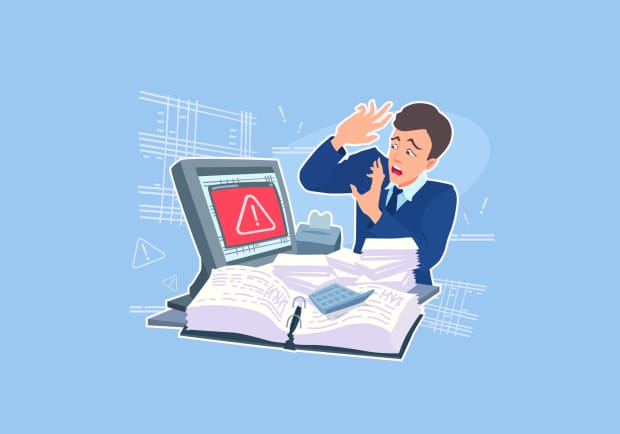This post was originally published on this site

Oops!
Getty Images/iStockphoto
When a mutual fund management team made an administrative mistake in May, it cost shareholders over $100 million. Now, that team has been re-assigned, and the asset manager has compensated the fund for the losses. But there are lessons to be learned from what went wrong, for both the asset manager and for investors.
In May, Investment News was first to report that the management team at the Invesco Equally-Weighted S&P 500 fund VADDX, +1.71% had incorrectly rebalanced its holdings. Every quarter, index providers – in this case S&P Dow Jones Indices – rebalance indexes to keep them in line with market movements over the previous three months. Because of the COVID-19 crisis that walloped the U.S. stock market in March, S&P Dow Jones Indices announced a delay in rebalancing, until the end of April.
As Invesco explained in an SEC filing, “in March 2020, due to volatility in the equity markets, S&P Dow Jones Indices communicated the decision to delay, and ultimately to separate, the rebalancing dates for its indices and noted some indices would be rebalanced in April and others in June. The Company noted this delay but not the separation of rebalance dates and omitted rebalancing the Funds on April 24, 2020 when S&P rebalanced the Index.”
The company also noted that the mistake was discovered, and the amount investors lost out on – $105 million – was contributed into the fund to make shareholders whole.
“At the end of the day, the buck stops with the portfolio management team,” said Todd Rosenbluth, head of mutual fund and ETF research for CFRA. Rosenbluth also noted that he couldn’t remember any similar issue ever befalling another asset manager.
Invesco declined to comment for this article.
In Invesco’s case, Rosenbluth noted, the exact same strategy – an equal-weighting of the S&P 500 Index SPX, +1.24% – is being tracked by separate teams, in that mutual fund and in an exchange-traded fund. The managers of the ETF, the Invesco S&P 500 Equal Weight ETF RSP, +1.64%, did complete the rebalancing effort correctly.
“It highlights the inefficiencies of having two different teams tracking the same benchmark,” Rosenbluth told MarketWatch. “That’s not a good use of firm resources.”
“Firm resources” matter because investors are relentlessly focused on lower costs. The Invesco ETF charges 20 basis points, and has been steadily hemorrhaging assets under management, losing nearly $4 billion over the past 12 months even as a cheaper competitor, the Goldman Sachs Equal Weight U.S. Large Cap Equity ETF GSEW, +1.67%, has charged 9 basis points and picked up flows into the fund.
In general, individual investors who buy ETFs and mutual funds should expect management to handle things appropriately, Rosenbluth noted, but this incident is a good reminder that sometimes things can go awry, and why it can sometimes pay to keep a closer eye on portfolio holdings than usual, particularly in times of market strain.
“The benefit of investing in an index fund that tracks a well-known benchmark is that investors should know roughly how they are performing,” he said. “If that performance is not as expected they should wonder why.”
In this case, according to Investment News’ analysis, the fund lagged its benchmark by 30 basis points on April 27, 60 basis points on April 28, and 83 basis points on April 29.
See: The first — and only — negative-fee ETF didn’t make it. Here’s what that tells us about investing.

